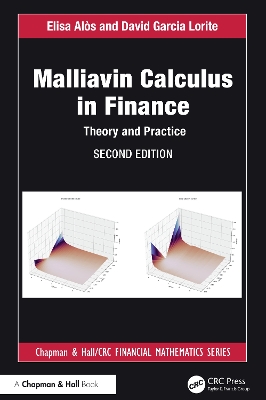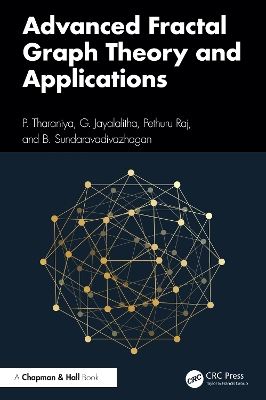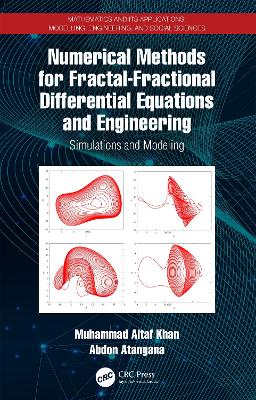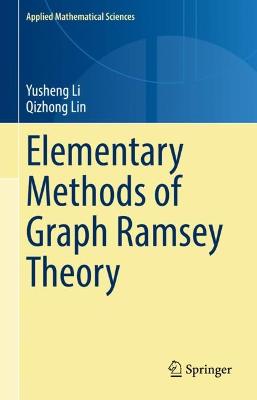Malliavin Calculus in Finance
 portes grátis
portes grátis
Malliavin Calculus in Finance
Theory and Practice
Alos, Elisa; Lorite, David Garcia
Taylor & Francis Ltd
12/2024
384
Dura
9781032636306
Pré-lançamento - envio 15 a 20 dias após a sua edição
Descrição não disponível.
I. A primer on option pricing and volatility modeling. 1. The option pricing problem. 1.1. Derivatives. 1.2. Non-arbitrage prices and the Black-Scholes formula. 1.3. The Black-Scholes model. 1.4. The Black-Scholes implied volatility and the non-constant volatility case. 1.5. Chapter's digest. 2. The volatility process. 2.1. The estimation of the integrated and the spot volatility. 2.2. Local volatilities. 2.3. Stochastic volatilities. 2.4. Stochastic-local volatilities 2.5. Models based on the fractional Brownian motion and rough volatilities. 2.6. Volatility derivatives. 2.7. Chapter's Digest. II. Mathematical tools. 3. A primer on Malliavin Calculus. 3.1. Definitions and basic properties. 3.2. Computation of Malliavin Derivatives. 3.3. Malliavin derivatives for general SV models. 3.4. Chapter's digest. 4. Key tools in Malliavin Calculus. 4.1. The Clark-Ocone-Haussman formula. 4.2. The integration by parts formula. 4.3. The anticipating Ito's formula. 4.4. Chapter's Digest. 5. Fractional Brownian motion and rough volatilities. 5.1. The fractional Brownian motion. 5.2. The Riemann-Liouville fractional Brownian motion. 5.3. Stochastic integration with respect to the fBm. 5.4. Simulation methods for the fBm and the RLfBm. 5.5. The fractional Brownian motion in finance. 5.6. The Malliavin derivative of fractional volatilities. 5.7. Chapter's digest. III. Applications of Malliavin Calculus to the study of the implied volatility surface. 6. The ATM short time level of the implied volatility. 6.1. Basic definitions and notation. 6.2. The classical Hull and White formula. 6.3. An extension of the Hull and White formula from the anticipating Ito's formula. 6.4. Decomposition formulas for implied volatilities. 6.5. The ATM short-time level of the implied volatility. 6.6. Chapter's digest. 7. The ATM short-time skew. 7.1. The term structure of the empirical implied volatility surface. 7.2. The main problem and notations. 7.3. The uncorrelated case. 7.4. The correlated case. 7.5. The short-time limit of implied volatility skew. 7.6. Applications. 7.7. Is the volatility long-memory, short memory, or both?. 7.8. A comparison with jump-diffusion models: the Bates model. 7.9. Chapter's digest. 8.0. The ATM short-time curvature. 8.1. Some empirical facts. 8.2. The uncorrelated case. 8.3. The correlated case. 8.4. Examples. 8.5. Chapter's digest. IV. The implied volatility of non-vanilla options. 9. Options with random strikes and the forward smile. 9.1. A decomposition formula for random strike options. 9.2. Forward start options as random strike options. 9.3. Forward-Start options and the decomposition formula. 9.4. The ATM short-time limit of the implied volatility. 9.5. At-the-money skew. 9.6. At-the-money curvature. 9.7. Chapter's digest. 10. Options on the VIX. 10.1. The ATM short time level and skew of the implied volatility. 10.2. VIX options. 10.3. Chapter's digest. Section V Non log-normal models. 11. The Bachelier implied volatility. 11.1. Bachelier-type Models. 11.2. A Decomposition formula for option prices. 11.3. A Decomposition formula for implied volitality. 11.4. The Bachelier ATM skew. 11.5. Chapter's digest. Bibliography. Index.
Este título pertence ao(s) assunto(s) indicados(s). Para ver outros títulos clique no assunto desejado.
Mathematics for Finance;Mathematical Modeling;Malliavin Calculus;Nualart;differential calculus;quantitative finance;stochastic analysis
I. A primer on option pricing and volatility modeling. 1. The option pricing problem. 1.1. Derivatives. 1.2. Non-arbitrage prices and the Black-Scholes formula. 1.3. The Black-Scholes model. 1.4. The Black-Scholes implied volatility and the non-constant volatility case. 1.5. Chapter's digest. 2. The volatility process. 2.1. The estimation of the integrated and the spot volatility. 2.2. Local volatilities. 2.3. Stochastic volatilities. 2.4. Stochastic-local volatilities 2.5. Models based on the fractional Brownian motion and rough volatilities. 2.6. Volatility derivatives. 2.7. Chapter's Digest. II. Mathematical tools. 3. A primer on Malliavin Calculus. 3.1. Definitions and basic properties. 3.2. Computation of Malliavin Derivatives. 3.3. Malliavin derivatives for general SV models. 3.4. Chapter's digest. 4. Key tools in Malliavin Calculus. 4.1. The Clark-Ocone-Haussman formula. 4.2. The integration by parts formula. 4.3. The anticipating Ito's formula. 4.4. Chapter's Digest. 5. Fractional Brownian motion and rough volatilities. 5.1. The fractional Brownian motion. 5.2. The Riemann-Liouville fractional Brownian motion. 5.3. Stochastic integration with respect to the fBm. 5.4. Simulation methods for the fBm and the RLfBm. 5.5. The fractional Brownian motion in finance. 5.6. The Malliavin derivative of fractional volatilities. 5.7. Chapter's digest. III. Applications of Malliavin Calculus to the study of the implied volatility surface. 6. The ATM short time level of the implied volatility. 6.1. Basic definitions and notation. 6.2. The classical Hull and White formula. 6.3. An extension of the Hull and White formula from the anticipating Ito's formula. 6.4. Decomposition formulas for implied volatilities. 6.5. The ATM short-time level of the implied volatility. 6.6. Chapter's digest. 7. The ATM short-time skew. 7.1. The term structure of the empirical implied volatility surface. 7.2. The main problem and notations. 7.3. The uncorrelated case. 7.4. The correlated case. 7.5. The short-time limit of implied volatility skew. 7.6. Applications. 7.7. Is the volatility long-memory, short memory, or both?. 7.8. A comparison with jump-diffusion models: the Bates model. 7.9. Chapter's digest. 8.0. The ATM short-time curvature. 8.1. Some empirical facts. 8.2. The uncorrelated case. 8.3. The correlated case. 8.4. Examples. 8.5. Chapter's digest. IV. The implied volatility of non-vanilla options. 9. Options with random strikes and the forward smile. 9.1. A decomposition formula for random strike options. 9.2. Forward start options as random strike options. 9.3. Forward-Start options and the decomposition formula. 9.4. The ATM short-time limit of the implied volatility. 9.5. At-the-money skew. 9.6. At-the-money curvature. 9.7. Chapter's digest. 10. Options on the VIX. 10.1. The ATM short time level and skew of the implied volatility. 10.2. VIX options. 10.3. Chapter's digest. Section V Non log-normal models. 11. The Bachelier implied volatility. 11.1. Bachelier-type Models. 11.2. A Decomposition formula for option prices. 11.3. A Decomposition formula for implied volitality. 11.4. The Bachelier ATM skew. 11.5. Chapter's digest. Bibliography. Index.
Este título pertence ao(s) assunto(s) indicados(s). Para ver outros títulos clique no assunto desejado.







